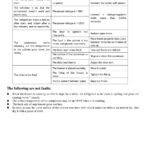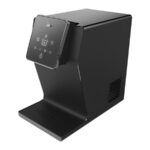
Your office chair plays a pivotal role in your workday. Whether you’re spending hours hunched over a computer or engaged in important meetings, the comfort and ergonomics of your chair can significantly impact your productivity and well-being. Fortunately, most modern office chairs are designed with adjustability in mind, allowing you to tailor them to your specific needs.
The art of adjusting office chairs isn’t just about finding the right settings; it’s about optimizing your workspace to promote good posture, reduce physical strain, and enhance your overall work experience. From seat height to lumbar support, armrests to recline tension, each adjustment can make a noticeable difference.
In this guide, we’ll explore the essential steps to properly adjust your office chair to ensure maximum comfort and productivity. Whether you’re new to office ergonomics or seeking to fine-tune your workspace, these adjustments are easy to implement and can help you create a healthier and more comfortable work environment.
Join us on this journey as we delve into the world of office chair adjustments, where small tweaks can lead to significant improvements in your daily work life.
How to Adjust Office
Your office chair plays a pivotal role in your workday. Whether you’re spending hours hunched over a computer or engaged in important meetings, the comfort and ergonomics of your chair can significantly impact your productivity and well-being. Fortunately, most modern office chairs are designed with adjustability in mind, allowing you to tailor them to your specific needs.
The art of adjusting office chairs isn’t just about finding the right settings; it’s about optimizing your workspace to promote good posture, reduce physical strain, and enhance your overall work experience. From seat height to lumbar support, armrests to recline tension, each adjustment can make a noticeable difference.
In this guide, we’ll explore the essential steps to properly adjust your office chair to ensure maximum comfort and productivity. Whether you’re new to office ergonomics or seeking to fine-tune your workspace, these adjustments are easy to implement and can help you create a healthier and more comfortable work environment.
Join us on this journey as we delve into the world of office chair adjustments, where small tweaks can lead to significant improvements in your daily work life.
Adjust the chair height.
Almost every office chair has seat height adjustability. There is a lever that allows you to set the chair height so that you can adjust the seat height to the right position. It will provide you with a comfortable feel for your legs and feet. Your legs should be at 90 degrees, and your feet should be flat on the floor.
If your chair is too high, it causes blood circulation problems in your legs while you spend a long time sitting on it. If you are smaller and the lowest height setting is too high for you, then you should use a footrest.
Ensure your feet are firm on the floor.
A good seat adjustment allows you to keep your feet flat on the ground. If you are taller, make the proper seat height to ensure your feet are firmly on the floor. It is very important to have appropriate blood circulation to your feet. Good posture can provide appropriate foot support and maximum comfort. If you are too short and your feet aren’t firmly on the ground, you need a footrest for a long time of sitting.
Adjust the chair angle.
Sometimes you need to swing around your chair at your workstation or at any meeting. Ergonomic office chairs feature a 360-degree swivel feature. It allows you to move around your office smoothly.
Adjust the backrest angle.
An ideal office chair features backrest adjustment. Any ergonomic chair allows you to lean on the backrest for comfortable positions. Sometimes, after a busy working day, you may need relaxation or a little nap. Sitting with the tilted backrest provides maximum comfort.
You can lock in the position you want the seat to be adjusted horizontally. An ergonomic adjustable office chair features a tilting knob to lock the backrest angle in the comfortable seating position you want. If you want to change the tilted position, just unlock the knob.
Adjust the backrest height.
Some office chairs allow adjusting the backrest height. It is important for tall people to get proper lumbar support. The adjustment lets you make the proper positioning of the lumbar curve of your chair.
It will provide firm support for your lower back and lumbar curve. There is a knob to adjust the backrest height on the back of the chair, which allows the backrest to move up and down.
Adjust the armrest height:
If your office chair provides the armrest adjustment, then position them under the desk for proper comfort while you type. It provides rest for your arms while typing for a long time. A good armrest adjustment should be at elbow height to keep your shoulders relaxed and your arms at a 90-degree angle.
Adjust the lumbar support:
It is a must to have the lumbar support adjustment in an ideal ergonomic office chair. The lumbar support should be in the natural curve position of your spine. Some chairs feature built-in lumbar support and backrests. You can adjust it with a backrest height adjustment. Some ergonomic chairs offer a lumbar pillow for lumbar support. You can position it as you want.
Caster Lock:
If you’re looking for an ideal office chair, look for a chair with the feature of caster lock adjustment. Not every office chair features a caster lock. Heavy-duty swivel casters let you move smoothly in your desk area. The caster lock provides perfect stability when you don’t want to move. It also keeps you safe from any unwanted incidents while you’re in a leaning position.
Final Word:
In the quest for an efficient and comfortable workspace, the art of adjusting office chairs emerges as a pivotal factor. Your office chair isn’t just a piece of furniture; it’s your loyal companion throughout the workday. By taking the time to understand and implement the adjustments discussed in this guide, you can transform your chair into a supportive partner that promotes good posture and well-being.
Remember, the benefits of proper chair adjustment go beyond mere comfort; they extend to your overall productivity and health. From reducing the risk of musculoskeletal issues to enhancing focus and energy, these adjustments are investments in your work life and future.
So, take a moment to assess your chair, tweak the settings to match your body’s needs, and witness the positive impact it can have on your daily work routine. Whether you’re in a corner office or a home workspace, your office chair can become the cornerstone of your productivity and comfort. Embrace the power of adjustment, and elevate your work experience to new heights. Your body and your productivity will thank you.




